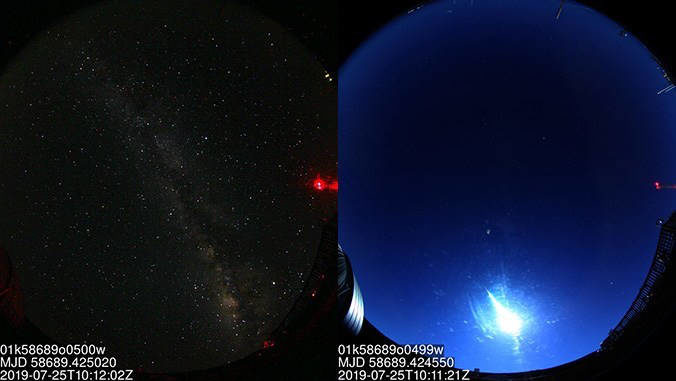The University of Hawaii's Asteroid Terrestrial-impact Last Alert System program on Mauna Loa caught an image of the meteor that briefly lit the sky brighter than a full moon.
According to a UH news release, the ATLAS program, located at the National Oceanic and Atmospheric Administration facility on Mauna Loa, searches for hazardous asteroids, and its all-sky weather-monitoring camera captured an image of the meteor during routine monitoring of the night sky.
"They are scientifically interesting and visually spectacular but pose no threat whatsoever," said ATLAS principal investigator Larry Denneau. "These occur over Hawaii Island maybe once every few months, and around the world there are dozens per night."
Comment: The statement that these meteors 'pose no threat whatsoever' isn't entirely true. See:
ATLAS is an asteroid impact early warning system operated by UH and funded by NASA, but the program is not designed to track meteoroids, which are harmless and too small to be detected prior to entering the atmosphere, UH said.
Rather, ATLAS looks for hazardous asteroids that are big enough to do damage — objects the size of a house or football field that are millions of miles away.
Capturing the July meteor flash was, as Denneau says, "serendipitous."
"Our weather camera shutter is open for 30 seconds every exposure, and the meteor lights up the entire sky."




Reader Comments
to our Newsletter